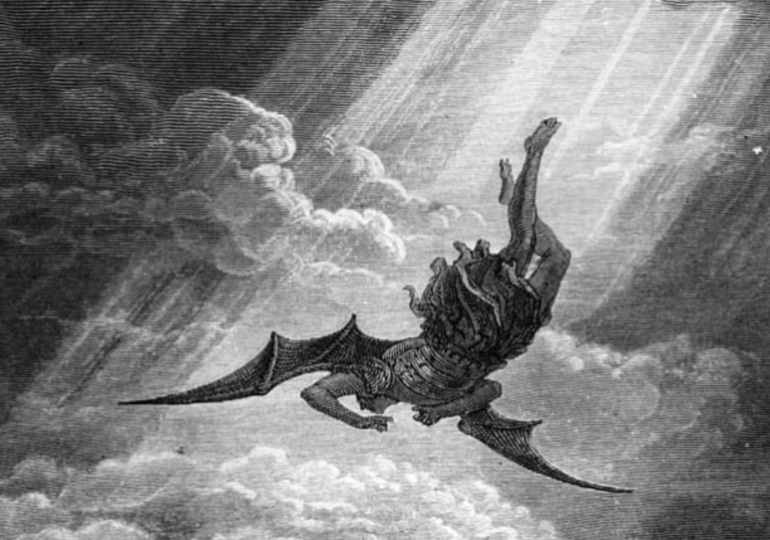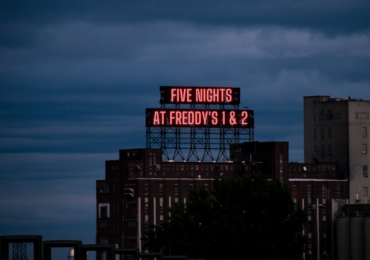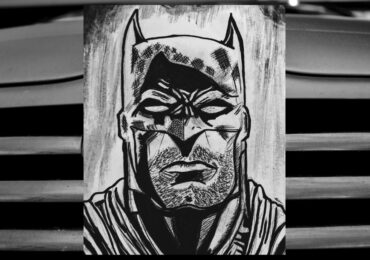And the great dragon was cast out, that old serpent, called the Devil, and Satan, which deceiveth the whole world: he was cast out into the earth, and his angels were cast out with him.
-Revelations 12:9
The Gothic, as a subgenre of the romantic, has always been invested in the sublime and the supernatural. As a result, the Gothic has ultimately become a genre that is often considered to be one of horror: it is a genre of passion and of emotion, in which the supposedly metaphysical forces of the world are exposed by their intrusion onto the mundane, domestic and often bourgeois space. What this achieves, in actuality, is to reveal that the great, chaotic, untamed wilderness is not so much in contrast to the domestic space, but rather that the notion of the ‘inside’ is a construction, man-made, that exists to repress the same desires perceived to be inherent in the ‘outside’. What this piece will focus on specifically is the method by which the Gothic often achieves this goal: through its archetypal character of the Devil.
In Gothic media, the Devil operates as a figure who exists outside of the perceived ‘system’. They are, practically speaking, not beholden to the authority figures in place, be those literal figures or systemic forces, and are able to shift between the two spaces with relative ease as a result. By introducing this character, a writer illustrates not only the existence of the system itself but intimates its construction. This characterisation of Satan can most famously be seen in Milton’s 17th-century masterpiece Paradise Lost, which catalogues Satan’s expulsion from Heaven into Hell, and his vengeance. In Milton’s retelling of this biblical story, Heaven can be seen to represent the ‘inner’, a proto-elitist and bourgeois space ruled by God, who can be inferred as moral value itself. The poet’s depiction of Heaven in such a way even led some to believe that Milton was actually ‘of the Devil’s party without knowing it, in the words of Blake. Hell, then, represents the ‘outer’. Satan subsequently comes to Earth, to Eden, and tempts Eve into eating from the tree of knowledge. In other words, the system creates Satan, and in attempting to expel him, reveals its own shortcomings (tyrannical moral values), which inevitably returns to bring about its Fall.
This has since been adopted by the Gothic. Take Wuthering Heights. In Emily Brontë’s foundational novel, Heathcliff takes on the mantle of the Devil; the moors represent a manifestation of the intense passions of the house and yet contrast its traditional, white, domestic space. Heathcliff is cast out, a figure of rage and impulse, onto the moors if only to return one day and wreak havoc on this idealistic family home. Heathcliff exists as an opposition to everything that the traditional English family image should entail. He is darker-skinned, an abandoned orphan without blood ties to the family, and his romance with Cathy is, even in her devoted eyes, inconceivable. Consequently, he is exiled and is transformed by their pre-conceived notions into the very violent and undomesticated spirit that they fear so greatly. The natural imagery of Wuthering Heights is by no means restricted to the moors, and it is thus indicated that the inner/outer dichotomy is completely fabricated.
Other classic Gothic texts, including Dracula and Frankenstein, employ a similar idea. In Dracula, the titular vampire is a foreign force who ‘invades’ the English national space. This has been read as a comment on the contemporary panic over sexually liberated attitudes, particularly in relation to women. Vampiric iconography is explicitly sexual and so is Dracula: these attitudes are cast out, and thus return to horrifying effect. Frankenstein also parallels this. The monster is made by Victor, a physical embodiment of Shelley’s trepidation of scientific advancement (over spirituality) and malpractice. However, it is banished to the wilderness, again only to come back with murderous intent. The monster has even read and referenced Paradise Lost. The system creates its monsters in the Gothic, and the Devil returns to punish them.
In more modern times, this tradition has been welcomed with open arms into the New Gothic. After the second world war, J.B. Priestley’s play An Inspector Calls utilised the character of the Devil to criticise the elitist middle-class family. The Inspector intrudes into the home where he precedes to provoke its inhabitants into admitting to each of their sins. In doing so, the sins of the archetypal bourgeois, white, domestic space are demonstrated, and more specifically the ways in which these systems oppress and even kill the working class. Pasolini’s late 60s film Teorema operates in much the same way. A man intrudes a bourgeois family home and each of the members of that family falls in love with him. He brings about all of the facets previously concealed by that bourgeois system, before leaving them to despair, and be made aware of this oppression more lucidly. Both of these instances crucially use the theme of knowledge: in Paradise Lost, it is paramount to note that firstly it is the knowledge that provides Eve’s temptation, but secondly that the Devil himself is not a physical actor in the Fall. Eve is bound only to her own temptation, and acts of her own accord with free will. The Devil can thus be said to represent self-destruction, not destruction from an exterior force. This can be seen in each of the examples depicted so far.
Another famous example in 20th-century literature resides in Bulgakov’s scathing indictment of Soviet secularism, The Master and Margarita, written under a Stalinist regime but published in the 60s. In this text, the Devil is, literally, the Devil. He arrives in Moscow with his troupe of demons and causes havoc in its bureaucracy: the gag being that the city is so secular and thus close-minded that it is literally unable to cope with anything outside of the norm. The Devil’s victims go disbelieved and are thrown into asylums. In doing so, the intense areligious attitude of Stalin’s Russia has created its own destruction. Furthermore, it illustrates the futility and artificiality of the authoritarian systems in place. Additionally, the first season of Fargo, a much more modern piece of media, uses the character of Malvo as its Devil, and draws parallels to Bulgakov’s interpretation. Malvo is completely unbeholden to the forms of authority that exist in the Midwest, be they the police, the post or organised crime. In doing so, he exposes the ways in which individuals can exist outside the system. This knowledge, the forbidden fruit, is such a tempting proposition for Martin Freeman’s everyman Lester that he, again and again, engages in actions that ultimately bring about his downfall purely so as to escape that system.
The final example to mention is Chytilova’s 1969 Czechoslovakian film The Fruit of Paradise. The film’s opening clearly depicts the fall of man in the Garden of Eden in the director’s typically dream-like fashion. Following this, we find ourselves in a country hotel of sorts, occupied in part by Eva, her husband Josef, and Robert, the Devil and serial killer of women. Robert, dressed in red, contrasts Josef’s grey mundane attire and ergo is implied to symbolise Eva’s sexual repression in her marriage. Robert is an unleashed, intensely masculine and violent libido and, according to Czech New Wave writer Peter Hames represents ‘an eligible means of escape… for those tempted beyond the conventions of the ideal state (whether this belongs to God or socialism)’ (Hames, 2005, 199). Eva vanquishes the Devil, killing him, but in doing so brings about her own entrapment into her marriage. The knowledge she thus attains is her oppressed status, and the irony is that she had to entrap herself to learn this: a metaphor for the repressive patriarchal system of marriage.
To conclude, the Devil is a recurring and useful archetype of Gothic literature. The character is a manifestation of systemic hubris and internalised repression, returning home to expose and reflect its weaknesses by moving between inner and outer spaces. The very threat of the Devil is his ability to move seamlessly between these socially constructed and oppressive binaries.









